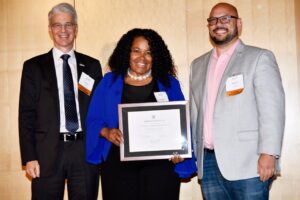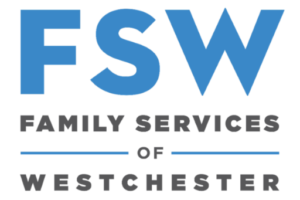 School budgets – Mention the words to most home-owners in Westchester and they’ll shake their heads and sigh. They know full well that the bulging budgets must stay robust to keep our children and grandchildren well-educated – and, frankly, whether we have heirs in the County or not, we all want to keep our school systems exemplary, our neighborhoods desirable and our home values high. Still, pride and love for our hometowns (and our homes’ market price) notwithstanding, regret and resignation often emerge when pondering school budgets, because we know that the budgets are built upon school taxes. Until a few months ago, the issue was simply that school taxes generally take by far the largest bite of an owner’s property taxes. In many cases, the morsel grew into a choking quarter-pounder in the last few years as properties were reassessed and, consequently, taxes were raised. Now there is a double whammy: the new tax bill, whether you love it or loathe it, caps property tax deductions at $10,000.
School budgets – Mention the words to most home-owners in Westchester and they’ll shake their heads and sigh. They know full well that the bulging budgets must stay robust to keep our children and grandchildren well-educated – and, frankly, whether we have heirs in the County or not, we all want to keep our school systems exemplary, our neighborhoods desirable and our home values high. Still, pride and love for our hometowns (and our homes’ market price) notwithstanding, regret and resignation often emerge when pondering school budgets, because we know that the budgets are built upon school taxes. Until a few months ago, the issue was simply that school taxes generally take by far the largest bite of an owner’s property taxes. In many cases, the morsel grew into a choking quarter-pounder in the last few years as properties were reassessed and, consequently, taxes were raised. Now there is a double whammy: the new tax bill, whether you love it or loathe it, caps property tax deductions at $10,000.
What’s a Westchester homeowner to do?
NY State Senator 35th District Andrea Stewart-Cousins, formerly a teacher in the Yonkers school system, understands the dilemma.
“How do we prepare our kids to achieve in a global society and not create an impossible tax burden for our citizens? Education is an investment in our present and our future, it’s the great equalizer. As a former teacher, I value our teachers – they are committed to the profession. They need resources and tools. Yet our homeowners, seniors on fixed incomes and many others too, are finding themselves home rich and cash poor. In some cases, this is even driving residents out of the County – upstate, south, wherever taxes are lower.”
Stewart-Cousins notes that when Governor Cuomo and the State Legislature capped the tax levy at 2% several years ago, that sent a “signal of awareness” of the problem. Now, with the new tax law not allowing for deductions over $10,000 in a county where even a moderate-valued home can easily have a property tax bill of $20,000 a year, it’s evident that New York and California are hit hard.
Says the senator: “My colleagues and I are looking for ways to further relieve the burden. Westchester is a particularly challenging environment. One of the things we did in passing the most recent Budget is establish a charitable foundation to aid education and allow for further taxpayer deductions. However, we still have to look at alternative sources to fund our schools, especially now that the federal tax structure is affecting everything. To that end, we are working with the State Division of Budget, the State Education Department, and the Taxation and Finance Department to develop additional fixes, small and large, to maintain strong schools and an affordable County and State.”
We asked the Districts covered by River Journal for some stats on the proposed school budgets prior to the statewide May 15 general vote by residents. We received responses from superintendents and their staffs. None of the Districts had finalized their proposed budgets – i.e. via board adoption – at the time we went to press. And, of course, nothing is final until the public votes.
The information that follows should help residents get an overview of the tentative proposed budgets. Once presented, how likely is it that the budgets will be adopted by the school board and then passed by residents?
To give a bit of perspective, we asked Al Marlin, communications manager, New York State School Boards Association (NYSSBA), if there are any figures showing the percent of budgets submitted by the Superintendent’s office that were rejected by the school boards. He told us: “No way of knowing this. Superintendents tend to be in constant contact with their boards about the budget, so what they present in April tends to have already been discussed and agreed upon.” In other words, it’s highly unlikely that the budget proposal won’t pass board muster.
We then asked, how likely is it that the proposed budget will be rejected by voters?
Marlin answered: “It depends on the year, but over the past five years, the OVERALL passage rates have been as follows:
2013 – 95.3%;
2014 – 98.2%
2015 – 98.7%
2016 – 98.5%
2017 – 99.3%
To go back further: http://www.nyssba.org/clientuploads/nyssba_pdf/School_Budget_Votes_Adoption_Trend_1969-2017.pdf (Download the PDF for additional information).
The only exception? He tells us: “… districts that seek budget overrides for exceeding the tax cap have passage rates that are far lower.”
These exceptions are rare and it is River Journal’s understanding that overrides have not been requested by the districts covered here, nor will they be this year. So, once again, rejection is not anticipated by any means.
Finally, we asked Marlin if he had any thoughts on why, since school budgets are so important and, yes, so costly to taxpayers, there is historically such low voter turnout?
“We can’t purport to know the motivations of voters, but some possible explanations are: voters tend to come out in droves when there is dissatisfaction, so low turnout might signify voter satisfaction with their schools; possible feelings that even if the budget was defeated, school districts can have a second try in June; contingency budgets may not be much different than the proposed budget; etc.,” said Marlin.
BRIARCLIFF MANOR
What is the projected budget for your District $-wise?
• $52,244,233
When will it be finalized?
• April 12.
How much will the budget for your District increase from last year’s budget?
• 1.51%
How was that figure
decided?
• Via the State’s levy limit calculation formula. The Consumer Price Index (CPI) increase for the 2017 fiscal year was 2.5%. The driving factors behind the 1.5% increase to the budget are primarily due to personnel and contractual costs. The District has worked hard to find efficiencies and creative solutions while at the same time improving our educational program, better supporting student social emotional heath and upgrading school security.
Why is the additional funding needed and how will it be used?
• Security upgrades, computer science/coding offerings, critical infrastructure repairs and maintenance as well as attracting and maintaining an outstanding faculty and staff.
Do you have any thoughts on why there is such a historically low voter turnout and is anything being done to correct this? How many voted last year?
• Over the last several years, our school budgets have passed by a very wide margin, but turnout has been low. Low turnout is not ideal, but can be attributable to community contentment with our educational program and the budget development process. Both the Board of Education and the District administrative team have done a wonderful job developing and supporting an innovative, high performing and value-oriented program. It is my hope, however, that we can encourage a greater percentage of the school community to show up to the polls and vote this year.
What is the contingency plan if the budget is not approved?
• I am confident that this year’s proposed budget is right in both size and scope and is in keeping with the Briarcliff Manor Community’s expectations.
OSSINING
What is the projected budget for your District $-wise?
• $128,155,000.
When will it be finalized?
• After the State budget is approved.
How much will the budget for your District increase from last year’s budget?
• 1.97%
How was that figure decided?
• The CPI used for the tax cap calculation this year is 2%. The tax levy cap is 2.33%.
Why is the additional funding needed and how will it be used?
• Annual increases in pension, health insurance and salaries.
Do you have any thoughts on why there is such a historically low voter turnout and is anything being done to correct this?
•We use a video, palm cards and newsletter to get the word out. We also send out a budget notice. Last year 1700 voted.
What is the contingency plan if the budget is not approved?
• Go out for another vote in June.
THE TARRYTOWNS
What is the projected budget for your District $-wise?
• We are in the middle of making revisions and adjustments to our proposed budget, and perhaps the levy, based on the feedback from our two Saturday Budget Hearings. Preliminary budget to date is $78,210,774.
When will it be finalized?
• Board of Education Adoption Date: April 17, 2018
How much will the budget for your District increase from last year’s budget?
• According to the Office of the New York State Comptroller, the Allowable Levy Growth Factor based on inflation is 2.13%. The District has proposed a preliminary real property tax levy increase of 2.00%.
How was that figure was decided?
• We utilize the New York State Comptroller Property Tax Cap worksheet to determine the allowable tax levy cap increase
Why is the additional funding needed and how will it be used?
• Funding supports our educational programs, co-curricular offerings, transportation, and facilities needs for our diverse community of learners. We will be adding and staffing a Life Skills program at Sleepy Hollow Middle School and adding an additional teacher to extend our FLES program from grades K-3. In addition, we will maintain our focus upon emergency preparedness, curriculum alignment and the professional development of our faculty and staff. A portion of the increase is to meet contractual obligations with respect to salary and benefits as well as increases in the Teacher and Employee Retirement Systems which we are mandated to pay.
Do you have any thoughts on why there is such a historically low voter turnout and is anything being done to correct this? How many voted last year?
• Please see the data from our last three budget votes with respect to voter turnout. Our turnout has increased during that time period.
2017/18 Vote: Total of 650 (476 Yes; 174 No)
2016/17 Vote: Total of 612 (447 Yes; 165 No)
2015/16 Vote: Total of 571 (432 Yes; 139 No)
What is the contingency plan if the budget is not approved?
• Currently under development. The contingency budget will consist of teachers’ salaries and ordinary contingent expenses in accordance with New York State Education regulations with no increase in the current tax levy.
How does Tarrytown vs. Sleepy Hollow break down as to the percentages each Village will pay with the overall budget from the Tarrytown Union Free School District – in other words, how is the increase being divided?
• The preliminary breakdown of the real property tax levy, based on the most current assessed valuations prepared and maintained by our local municipalities, is 59.98% in the Greenburgh portion of our District and 40.02% in the Mt. Pleasant portion of our School District. We will share the equalized estimated tax rates at our April 17th Board Meeting, as these are still subject to change.
IRVINGTON
What is the projected budget for your District $-wise?
• Currently we have presented a budget of $61,317,085 to the Board. There will likely be a few changes.
When will it be finalized?
• The Board will adopt the budget on April 17.
How much will the budget for your District increase from last year’s budget?
• The District’s estimate of the proposed tax rate increase is 1.9% as this takes into consideration the total assessed valuation of all properties in the District. The total budget increase is almost double that figure, but the funding comes from multiple sources.
How was that figure decided?
• There are two main factors in the levy cap formula: tax levy inflation increase (same for all districts in NYS) and a property growth factor which is set by the Office of Real Property Tax, which will vary for each district. The formula also takes into consideration changes in PILOTS (Payments in Lieu of Taxes) and capital debt.
Why is the additional funding needed and how will it be used?
• The budget will support ongoing expenses including contractual salary and benefit increases which amounts to 73% of the budget; special education services to support necessary student needs; increased transportation costs; and equipment and furniture replacements. There are also a few new considerations, including a K-5 Guidance counselor to support student needs (but
it is also a State mandate to now provide a K-12 guidance program for which there is no new State funding); a K-2 Project Lead the Way teacher to complete the District’s implementation of a K-12 STEM continuum; assistant coaches for the athletic program to provide for increased student safety and supervision; a part-time district clerk/registrar; increased funds for security initiatives; and a late bus for middle school and high school students.
What is the contingency plan if the budget is not approved?
• This has not been discussed yet.






